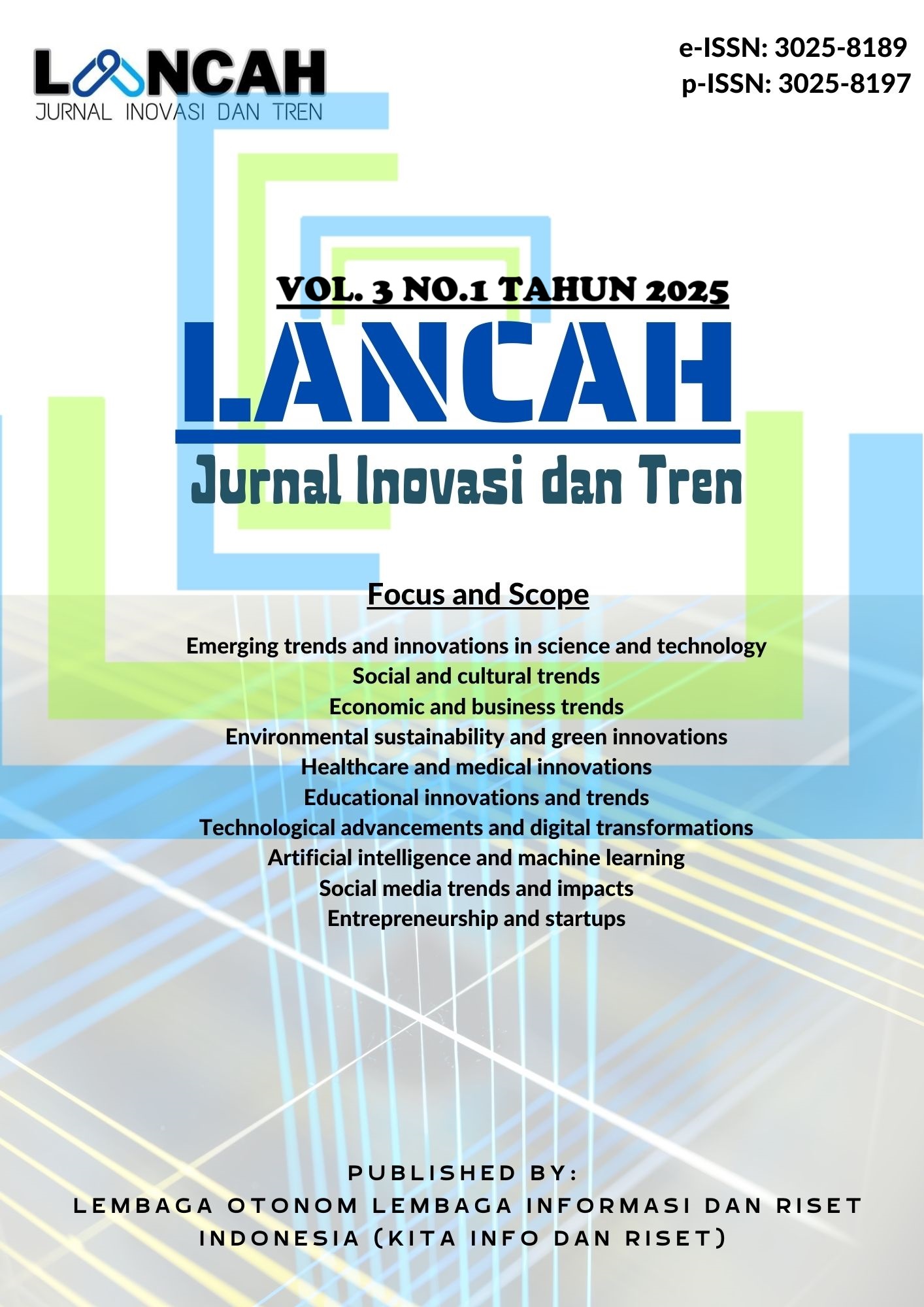Published: 2025-04-10
Rancang Bangun Perangkap Nyamuk Portabel dengan Sumber Listrik Utama dan Alternatif
DOI: 10.35870/ljit.v3i1.4011
Yanaripta Herdanu, Wendhi Yuniarto, Rusman
- Yanaripta Herdanu: Politeknik Negeri Pontianak , Indonesia
- Wendhi Yuniarto: Politeknik Negeri Pontianak , Indonesia
- Rusman: Politeknik Negeri Pontianak , Indonesia
Article Metrics
- Views 0
- Downloads 0
- Scopus Citations
- Google Scholar
- Crossref Citations
- Semantic Scholar
- DataCite Metrics
-
If the link doesn't work, copy the DOI or article title for manual search (API Maintenance).
Abstract
Sebagai upaya penanggulangan dari peningkatan populasi nyamuk yang menyebabkan banyak penyakit seperti demam berdarah dan malaria, dikembangkan perangkap nyamuk yang memanfaatkan energi alternatif dari panel surya berkapasitas 20 WP dan baterai 18650 dengan daya 5000 mAh. Perangkap ini dilengkapi dengan sistem manajemen baterai (BMS) untuk perlindungan, rangkaian pengganda tegangan, sinar ultraviolet sebagai pemikat nyamuk, serta fitur penerangan manual dan modul pengisian daya darurat. Alat ini menggunakan bahan akrilik untuk mendukung portabilitas dan menjaga keberlanjutan lingkungan. Tujuan utamanya adalah menyediakan solusi pengendalian nyamuk yang aman bagi manusia dan hewan, mengurangi ketergantungan pada sumber listrik konvensional, serta memberikan manfaat kesehatan, ekologi, dan teknologi. Berdasarkan hasil pengujian, perangkap ini terbukti efektif menangkap nyamuk baik di dalam maupun di luar ruangan, dengan rata-rata tangkapan sebesar 0,22 ekor/menit di dalam ruangan tanpa manusia, 0,242 ekor/menit dengan manusia, dan 0,192 ekor/menit di luar ruangan. Alat ini menawarkan solusi efektif dan fleksibel untuk pengendalian populasi nyamuk, terutama dalam kondisi darurat atau di area yang tidak memiliki akses ke listrik konvensional dengan berbagai pilihan sumber energi alternatif.
Keywords
Nyamuk ; Perangkap Nyamuk ; Portable ; Energi Alternatif ; PLN
Article Metadata
Peer Review Process
This article has undergone a double-blind peer review process to ensure quality and impartiality.
Indexing Information
Discover where this journal is indexed at our indexing page to understand its reach and credibility.
Open Science Badges
This journal supports transparency in research and encourages authors to meet criteria for Open Science Badges by sharing data, materials, or preregistered studies.
How to Cite
Article Information
This article has been peer-reviewed and published in the LANCAH: Jurnal Inovasi dan Tren. The content is available under the terms of the Creative Commons Attribution 4.0 International License.
-
Issue: Vol. 3 No. 1 (2025)
-
Section: Articles
-
Published: %750 %e, %2025
-
License: CC BY 4.0
-
Copyright: © 2025 Authors
-
DOI: 10.35870/ljit.v3i1.4011
AI Research Hub
This article is indexed and available through various AI-powered research tools and citation platforms. Our AI Research Hub ensures that scholarly work is discoverable, accessible, and easily integrated into the global research ecosystem. By leveraging artificial intelligence for indexing, recommendation, and citation analysis, we enhance the visibility and impact of published research.




Yanaripta Herdanu
Teknologi Rekayasa Elektronika, Jurusan Teknik Elektro, Politeknik Negeri Pontianak, Indonesia
Wendhi Yuniarto
Teknologi Rekayasa Elektronika, Jurusan Teknik Elektro, Politeknik Negeri Pontianak, Indonesia
-
-
Amalia, A. (2019). Kesiapan Masyarakat Semarang dalam Pemanfaatan Potensi Energi Surya sebagai Sumber Energi Alternatif Berkelanjutan. SAINTEK: Jurnal Ilmiah Sains Dan Teknologi Industri, 2(2), 39. https://doi.org/10.32524/saintek.v2i2.462
-
Mahendra, A., & Firmawati, N. (2022). Rancang Bangun Alat Mosquito Killer Menggunakan Buzzer dan Perangkap Lampu Violet. Jurnal Fisika Unand, 12(1), 70–76. https://doi.org/10.25077/jfu.12.1.70-76.2023
-
-
Rokom. (2021). Data Kasus Terbaru DBD di Indonesia (2020). Sehatnegeriku.Kemenkes.Go.Id. https://sehatnegeriku.kemkes.go.id/baca/umum/20201203/2335899/data-kasus-terbaru-dbd-indonesia/

This work is licensed under a Creative Commons Attribution-NonCommercial-ShareAlike 4.0 International License.
Authors who publish with this journal agree to the following terms:
1. Copyright Retention and Open Access License
Authors retain copyright of their work and grant the journal non-exclusive right of first publication under the Creative Commons Attribution 4.0 International License (CC BY 4.0).
This license allows unrestricted use, distribution, and reproduction in any medium, provided the original work is properly cited.
2. Rights Granted Under CC BY 4.0
Under this license, readers are free to:
- Share — copy and redistribute the material in any medium or format
- Adapt — remix, transform, and build upon the material for any purpose, including commercial use
- No additional restrictions — the licensor cannot revoke these freedoms as long as license terms are followed
3. Attribution Requirements
All uses must include:
- Proper citation of the original work
- Link to the Creative Commons license
- Indication if changes were made to the original work
- No suggestion that the licensor endorses the user or their use
4. Additional Distribution Rights
Authors may:
- Deposit the published version in institutional repositories
- Share through academic social networks
- Include in books, monographs, or other publications
- Post on personal or institutional websites
Requirement: All additional distributions must maintain the CC BY 4.0 license and proper attribution.
5. Self-Archiving and Pre-Print Sharing
Authors are encouraged to:
- Share pre-prints and post-prints online
- Deposit in subject-specific repositories (e.g., arXiv, bioRxiv)
- Engage in scholarly communication throughout the publication process
6. Open Access Commitment
This journal provides immediate open access to all content, supporting the global exchange of knowledge without financial, legal, or technical barriers.
